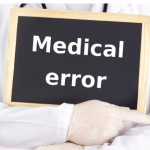When
One trick to minimizing cognitive errors entails recognizing when specific errors are most likely to occur. For example, availability bias is most likely to occur soon after seeing an unusual case or learning new information about a diagnosis. If ever you find yourself saying, “What a coincidence. I just learned about this disease last week, and here I am seeing it for the first time,” that’s a time to pause and consider the possible influence of availability bias.
Similarly, when working with a patient with a known psychiatric history, considering the possibility of psych-out bias is important. Virtually any reported symptom can be attributed to a psychiatric diagnosis. For example, fatigue can be attributed to depression, and shortness of breath can be attributed to anxiety. Indeed, although depression is a common cause of fatigue, depressed patients also develop lupus and vasculitis, for which fatigue may be a predominant presenting symptom.
Tragically, psych-out bias carries considerable consequences: Patients with severe mental health disorders die, on average, 10–20 years earlier than the general population.8 It is now recognized that the majority of these deaths are secondary to physical illness, with estimates suggesting that only 25% of these patients received the correct diagnosis prior to death.8-10
In addition to availability and psych-out biases, providers need to be cautious when considering rare or exciting diagnoses. When a zebra diagnosis is on the differential, overattachment to an interesting diagnosis can lead a clinician to commit anchoring bias (see Table 2). The zebra diagnosis may be less likely than more banal diagnoses on the differential, but the desire to “find a Whipple’s disease” can result in failure to consider pieces of data that don’t fit that diagnosis, anchoring instead on the aspects that do.
Table 2: Conditions Leading to Bias
| Over-attachment to a diagnosis | • Anchoring • Confirmation Bias • Premature Closure |
|---|---|
| Inheriting others’ thinking | • Diagnostic Momentum • Framing Effect |
| Failure to consider an alternative or secondary diagnosis | • Search Satisficing |
| Provider attributes | • Hassle Bias • Commission/Omission Bias • Rheum/Not-It Bias |
| Likelihood misperception | • Availability Bias • Posterior Probability Error |
| Affective biases | • Psych-out Error • Like/Dislike a Patient |
Similarly, when a rheumatologist makes a diagnosis due to a pathognomonic finding, anchoring bias may play a role, and the provider would do well to remember that no finding has 100% specificity, making the term pathognomonic something of a misnomer. For example, although palpable purpura is a common finding in IgA vasculitis, it can also occur in other conditions, and rheumatologists should never make the error of believing that palpable purpura equals IgA vasculitis—or that any other finding equals the associated diagnosis.
Clinicians should also be aware of environmental situations that increase the risk of making medical errors. Often, in these scenarios, providers have limited time with a high volume of patients. In such instances, providers may rely too heavily on type 1 thinking and lack the time or energy to toggle into and out of type 2 thinking as needed. This leaves providers especially vulnerable to bias on the most demanding days. On these days, it is all too easy to place undue emphasis on a patient’s previous medical history and assume current symptoms must be related to a previous diagnosis (i.e., posterior probability error).
In busy scenarios, providers may only have time to thoroughly focus on certain clinical features (i.e., anchoring bias), use diagnostic testing to support rather than refute initial reasoning (i.e., confirmation bias), and then cease reasoning once testing seemingly confirms suspicions (i.e., premature closure). Importantly, time constraints may also dissuade providers from performing additional testing or procedures that might be labor intensive, such as coordinating a muscle biopsy (i.e., hassle bias). Unfortunately, biases are additive, and the correct diagnosis is easily obscured by layers of bias.
How Cognitive Errors Unfold
Awareness of the many described cognitive biases—of which only a small set are highlighted in this article—is an important first step, but providers also need to learn to recognize bias in clinical scenarios. With practice, it becomes possible to recognize biases at play in real time.
Case 1
A 50-year-old homeless man with paranoid schizophrenia and gout is admitted with generalized anasarca from newly diagnosed heart failure. He undergoes aggressive diuresis, but swelling of his left wrist and hand do not improve. The patient is also noted to have significant pain and limited range of motion of the left wrist. He reports to multiple providers that the pain and swelling of his right wrist started several months prior to admission, while he was making a 50-mile trip using his motorized scooter. This history is attributed to delusional thinking in the setting of undertreated schizophrenia.
A rheumatologist is consulted for management of gout and, after an X-ray to rule out calcium pyrophosphate dihydrate crystal deposition disease, prescribes colchicine without performing arthrocentesis. The patient’s pain, however, persists for weeks.
Ultimately, an MRI of the wrist is performed, revealing diffuse rice bodies in the flexor tendons. Eventually, the patient agrees to debridement of the wrist, and cultures reveal Mycobacterium tuberculosis.
Diagnosis: M. tuberculosis tenosynovitis
Cognitive errors:
- Psych-out bias: attributing the chronic nature of his symptoms to delusion;
- Posterior probability: neglecting to consider a full differential diagnosis due to a history of gout; and
- Framing bias: the rheumatologist’s thinking is influenced by being consulted for “gout management.”
Case 2
A 56-year-old woman with tophaceous gout and years of stable low-back pain develops an acute right-sided foot drop and alerts her rheumatology providers to this change in symptoms because she is concerned this is a complication of her gout. The patient lives four hours away from her rheumatologist and requests that testing be minimized due to transportation challenges. Her providers recommend MRI, which reveals a right-sided disc bulge at L4–L5.
Her foot drop is attributed to L5 nerve root involvement of her sciatica and a neurosurgeon operates to relieve the compression. Within one week of surgery, however, she develops bilateral ischemic toes, diffuse palpable purpura and acute renal failure. Renal biopsy reveals crescentic necrotizing glomerulonephritis with granulomatous inflammation, consistent with granulomatosis with polyangiitis.
Diagnosis: Foot drop due to mononeuritis from granulomatosis with polyangiitis
Cognitive errors:
- Search satisficing: no other evaluation was performed once the MRI found evidence of disc bulge, even though most disc bulges do not cause nerve compression;
- Hassle bias: due to the difficulty of arranging an urgent outpatient nerve conduction study, this test was not ordered; and
- Confirmation bias: providers looked only for MRI verification of mechanical lumbago, rather than ordering additional studies to look for other possible causes of new neurologic symptoms.
Case 3
A 40-year-old woman presents with daily, early-morning fevers, arthralgias, macular rash, pharyngitis and leukocytosis, despite four weeks of broad antimicrobial therapy. A rheumatologist is consulted to evaluate a fever of unknown origin, but signs off after the initial evaluation, suggesting an infectious etiology. A broad infectious and malignant evaluation is unrevealing, prompting a second consultation with a rheumatologist.
A different team immediately begins evaluation for—and ultimately makes a diagnosis of—adult-onset Still’s disease, without the patient developing any symptoms beyond those with which she initially presented.
Diagnosis: Adult-onset Still’s disease
Cognitive errors:
- Availability bias: the probability of an infectious cause was inflated by a recent fever of unknown origin caused by infection;
- Hassle bias: on a busy service, providers face an insidious pressure to sign off on cases, sometimes prematurely; and
- Framing bias: if a busy, tired trainee on the consulting service suspects a condition is not rheumatic, due to the biases listed above, the manner in which the case is presented to the attending physician is likely to influence the attending’s clinical reasoning.
Case 4
A 21-year-old woman is diagnosed with biopsy-confirmed, toxin-induced myopathy caused by an over-the-counter herbal supplement. Her creatinine kinase (CK) levels and strength improve with cessation of the supplement. However, her strength does not return to baseline after four months; her CK improves from 50,000 U/L to 1,000 U/L, but never normalizes.
Her providers recognize the potential for posterior probability bias leading to ongoing attribution of persistent CK elevation to the toxin-induced myopathy. Therefore, they take a step back and reinitiate a broad evaluation for myopathy, inclusive of thyroid function studies. The patient’s thyroid-stimulating hormone (TSH) is found to be 128 µIU/L, and her thyroxine (T4) level is undetectable. Anti-thyroid peroxidase antibody is strongly positive. She is diagnosed with autoimmune thyroiditis, and with initiation of levothyroxine, her labs normalize and her strength returns.
Diagnosis: Hypothyroid-induced myopathy
Debiasing Strategies (see Table 3):
- Metacognition: appreciation of the potential for posterior probability;
- Recognition of unexplained or unresolved symptoms: ongoing weakness despite treatment (toxin avoidance); and
- Application of a specific forcing: evaluating thyroid function in all myopathy patients.
As shown in this last case, multiple strategies can be employed to recognize and prevent cognitive errors, a process referred to as metacognition. At its core, metacognition is an awareness of one’s own clinical reasoning and the potential ways error can be introduced in the process of reaching a diagnosis.11 Acknowledging fallibility, considering multiple perspectives and allowing for self-critique are some of the strategies providers can use to increase metacognition. Metacognition can enable a provider to recognize that a hectic clinical scenario or a patient with a known psychiatric diagnosis increases the chance of cognitive errors, prompting the provider to use debiasing strategies.
Table 3: Debiasing Strategies
| Transitions in care • New consults • Receiving handoff • Giving handoff or writing notes | Re-examine the workup to date and search for any possible gaps or assumptions. Question if the diagnosis is in fact a “working diagnosis” or if the diagnosis has been confirmed. Determine what ambiguity needs to be emphasized. Chose language that accurately indicates what is known versus what is suspected. |
|---|---|
| Hectic situations | Ask what the next most likely diagnosis would be if the initial diagnosis is ruled out. |
| Frustrating patients | Take an extra thorough history/review of systems, be thorough in formulating a differential, and take precautions to avoid confirmation bias, premature closure and hassle bias. |


